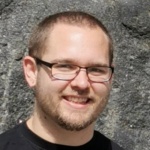Diversity on a thematic and methodological level
What are the current trends in the digital humanities research community? How can academic communication succeed both within and outside the research community? How is the diversity of literary figures constructed with regard to gender? The projects of the Digital Humanities department cover a wide range of topics. A particular focus is on computer-aided analysis, the Computational Literary Studies (CLS). But we are also interested in aspects of narrative theory, interactions between culture and literature, public humanities and the dissemination of digital methods.
On this page we present some of our current and past projects.
Current projects
As part of our hybrid, open MA colloquia, Master's students in Digital Humanities at the University of Stuttgart present their final projects. In addition, guest lectures from the international DH community enable students to exchange ideas and network during their studies. We cordially invite you to join us digitally or on site and join the discussion!
Staff members: Mareike Schumacher (University of Stuttgart), Clara Helmig (University of Regensburg)
The digital humanities podcast RaDiHum20 - the radio for digital humanities is co-produced by the Department of Digital Humanities at the University of Stuttgart. As part of this community podcast, more than 100 personalities from the digital humanities have already been interviewed, from students, academic staff and people who have left academia to professors and board members of the DHd association. So you get to hear a diverse range of DH voices. RaDiHum20 has also been a media partner of the annual conferences of the digital humanities in German-speaking countries (DHd conferences) since 2023.
Hosts: Mareike Schumacher (Universität Stuttgart), Lisa Kolodzie (Init, Mainz), Jonathan Geiger (Akademie der Wissenschaften und der Künste Mainz), Jascha Schmitz (HU Berlin), Redaktionsassistenz: Clara Helmig (Universität Regensburg)
The m*w project investigates gender representations in literary texts. Using methods of text mining, in particular machine learning and network analysis, we are investigating the extent to which character profiles reveal different patterns of gender representation. We are particularly interested in what typical gender profiles look like and when they start to break. What unusual gender representations are there? We are also interested in the extent to which unusual gender representations are more common in contemporary texts and what representations of diversity there were in other times.
Staff member: Mareike Schumacher (Universität Stuttgart), Marie Flüh (Universität Hamburg)
In her dissertation, Nora Ketschik examines characters and character constellations in a corpus of Middle High German "classical" Arthurian romances using computer-aided methods. She places a special focus on the method of social network analysis, with which the occurrences and relationships of characters can be computationally recorded, quantitatively evaluated, graphically visualized and explored. The investigations concentrate on Hartmann von Aue's Arthurian romances 'Erec' and 'Iwein' as well as Wolfram von Eschenbach's 'Parzival'. They tie in with questions of character conception and plot structure and approach the thematic complex from a new, data-driven perspective. The aim of the work is to explore the possibilities and limitations of the computer-assisted method for literary analysis purposes on the basis of specific texts.
In the first part of her dissertation, Nora Ketschik deals intensively with the challenges of adequate operationalization, on the basis of which the data for the network analyses can be collected. To this end, she develops a complex procedural model that extracts character occurrences and relations from the narrative texts and does justice to certain characteristics of narrative texts by taking into account, for example, the status of a character (extra- or intradiegetic) and the context of the character's mention (e.g. narrator commentary, character speech). Her main focus is on the transparent operationalization and critical handling of the question of how the relevant concepts can be translated into textual, computationally recordable indicators. To this end, the influence of decisions within the operationalization process on the extracted data and the resulting networks will be examined. The developed process model has a modular structure and integrates manual and automated processes in order to be able to adapt it flexibly to the objects and questions under investigation and at the same time ensure efficient semi-automated text processing.
The subsequent analyses explore the potential of the chosen approach and show examples of the types of questions for which the method of social network analysis can be used. Questions are addressed regarding the scope, composition and complexity of the social fabric, the centrality of the protagonists in their respective networks and, in connection with this, the robustness of the networks and the autonomy of the secondary characters. In addition, the plot line in the Arthurian romances is analysed, the influence of the characters' speech on the constellations of characters is determined and a dynamic visualization is proposed which depicts the occurrence and co-occurrences of the characters over the course of the plot and in this way usefully complements the static network analyses. The investigations are based on the network graphs, relevant key figures and alternative visualization techniques (such as the fingerprint view) in conjunction with close-reading methods.
Overall, the analyses focus on various aspects of the constellation of characters and the conception of characters, which produce differentiated results and sometimes contradictory tendencies in the Arthurian romances. They combine data-driven, macro-analytical approaches with textual evaluations and bring together quantitative and qualitative findings. Methodologically, the possibilities, but also the limitations of the methods used (for example with regard to semantic aspects) are reflected upon. With the publication of the annotated data, the work creates an important basis for computer-aided text analyses and provides impulses for further digital studies on the category of the figure.
Zenodo: https://zenodo.org/doi/10.5281/zenodo.7544004
Host: Nora Ketschik
Finished projects
Staff members: Gabriel Viehhauser, Claus-Michael Schlesinger, Pascal Hein
The interdisciplinary Science Data Center for Literature (SDC4Lit) has set itself the goal of sustainably implementing a data life cycle for digital literature: Archiving, research and dissemination are systematically reflected upon and appropriate solutions implemented. In particular, the fact that modeling, storage and analysis cannot be separated due to the special form of digital literature and that research questions must be considered from the perspective of the specialist communities is to be taken into account.
In SDC4Lit, distributed, long-term available repositories for digital literature will be set up and made accessible via a research platform. The repositories are regularly expanded; the research platform offers the opportunity to work with the data on a computerized basis.
Cooperation partner:
Deutsches Literaturarchiv Marbach
Höchstleistungsrechenzentrum Stuttgart
Institut für Maschinelle Sprachverarbeitung der Universität Stuttgart
Website:
https://www.sdc4lit.org/
Staff member: Gabriel Viehhauser, Toni Bernhart
Acoustic expressions are cultural-historical phenomena. In all their material and cultural forms, meanings and functions, they have become a major focus of literary research in recent years. As medial and intermedial forms of expression, they have also played an important role in cultural, theater and media studies and sound studies for some time.
The key questions for "textklang" result from discourses in literary studies, in particular from poetry research, which has repeatedly emphasized the special status of the sonority and performance of lyrical texts. In order to systematically investigate the relationship between literary texts, specifically in Romantic poetry, and the interdependence of their phonetic realization in recitation, sung performance and musical performance, a mixed-methods workflow is designed for theoretically sound, hypothesis-driven research that is intended to outline new perspectives in poetry research. The interrelationships between text (interpretation) and prosodic language features are examined on the basis of audio recordings of speech and music performances and digitized printed music. Hypotheses can be formulated on the basis of sonic parameters, which can be explored macro-analytically in the corpus and finally validated in a controlled manner in perception experiments if individual parameters are changed through resynthesis.
Cooperation partner:
Deutsches Literaturarchiv Marbach
Institut für Maschinelle Sprachverarbeitung der Universität Stuttgart
Website:
https://www.srcts.uni-stuttgart.de/abteilungen/digital_humanities/textklang/
Staff member: Gabriel Viehhauser, Andreas Pairamidis, Florian Barth
The project deals with the digital modeling of spatial constructions in narrative texts. The category of space has so far received little attention in narratology, although the setting of a narrative is a similarly central element as the characters or the plot. Yuri Lotman's approach to spatial semantics in particular makes it clear that spaces often have a meaning of their own, e.g. the forest is often the sphere of monsters and fairies and stands in contrast to the city, castle or civilization. The boundary between these spaces can usually only be crossed by the hero; this makes it clear how characters, events and plot belong together in Lotman's approach.
On the one hand, digital modeling of this spatial semantics poses a methodological challenge, as spaces in narratives are to a large extent created implicitly and are difficult for the computer to capture. On the other hand, the need to make the models more precise, which the computer brings with it, can lead to a gain in narratological knowledge. We are currently working in particular on network analyses of various texts, especially Ovid's Metamorphoses, in order to make the network of relationships between space, characters and events clear and to visualize them exploratively with the help of the computer.
Staff member: Malte Heckelen
In my dissertation project, I am interested in how Marvel and DC build their transmedia narrative worlds differently. To this end, I have merged data on character appearances and professional collaborations from the Marvel and DC fandom wikis with the comics.org database (data ranges from 1960 - 2018 for comics, movies, series, etc.). The dataset allows me to describe and model the evolution of character networks (based on shared appearances) and professional collaboration networks.
I am particularly interested in narrative "momentum": transmedia stories and serial content in themselves live, grow and remain attractive to recipients along the narratives implied by the already established narrative worlds: if Superman and Batman appear together in a team, for example, this raises questions, and thus also possibilities, for stories about the difficulties of cooperation between unequal character heads - or simply about the question of who makes the coffee in the JLA Watchtower.
To find out how Marvel and DC expand their highly interconnected and long-lasting narrative worlds along this worldbuilding concept, I look at how characters move towards and away from each other in the network - how their narrative worlds overlap at times and thus potentially imply new connections.
Which characters have more momentum and when, when does the overall universe focus more on them and when not? Does this vary depending on which categories these characters belong to (e.g. gender)? And does this lead to undesirable incongruities, such as major differences between the narrative worlds of the films and comics? To answer these questions, I use classical network analytic metrics, but weight the relationship types in my networks according to the changes in proximity between characters.
Since the creative process in U.S.-American comics is highly collaborative and based on a division of labor, I am also interested in the effects of social connections that arise from previous collaborations. Does social proximity between creators affect character selection and can the character network be shown to be the result of this proximity? Or are classical network dynamics such as preferential attachment and triadic closure a sufficient explanation?
Contact
Kerstin Dorner
Secretary

Pascal Hein
Academic Staff



